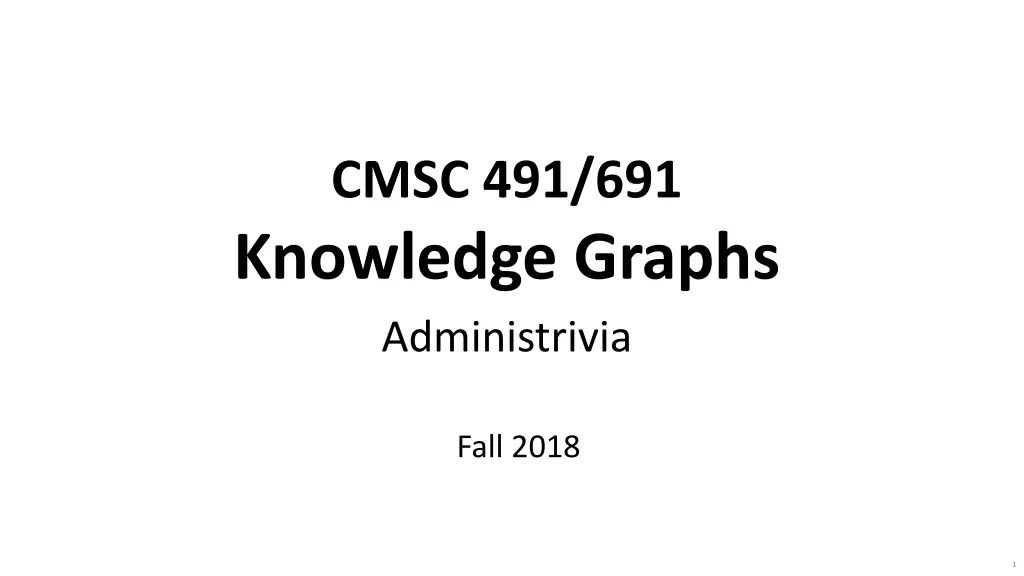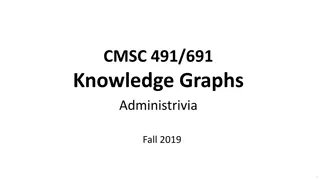
Understanding Knowledge Graphs in Semantic Web - CMSC.491/691 Fall 2018 Administrivia
Dive deep into the world of Knowledge Graphs and Semantic Web, learning concepts, tools, and creating projects. Grading criteria and instructor details included.
Download Presentation

Please find below an Image/Link to download the presentation.
The content on the website is provided AS IS for your information and personal use only. It may not be sold, licensed, or shared on other websites without obtaining consent from the author. If you encounter any issues during the download, it is possible that the publisher has removed the file from their server.
You are allowed to download the files provided on this website for personal or commercial use, subject to the condition that they are used lawfully. All files are the property of their respective owners.
The content on the website is provided AS IS for your information and personal use only. It may not be sold, licensed, or shared on other websites without obtaining consent from the author.
E N D
Presentation Transcript
CMSC 491/691 Knowledge Graphs Administrivia Fall 2018 1
Course Objectives Understand concepts, motivation, goals underling knowledge graphs (KGs) In-depth understanding of Semantic Web (SW) languages and tools Ability to create & use ontologies & schemas using SW languages Understand the different kinds of KG models and capabilities Create, consume and manipulate KG data Know alternatives: XML, JSON, Schema.org, Google Knowledge Graph, Ability to define and implement a KG project 2
Grading Grades will be based on homework, quizzes, exams and a project 5-6 short homework assignments Submissions will be via github classroom Occasional online Blackboard quizzes focused on readings In class midterm exam near middle of class, comprehensive final at end Project can be individual or small groups and will have a proposal and final report Probable weighting: 40% homework, 15% project, 10% quizzes, 15% midterm, 20% final
Instructor availability Instructor: Professor Tim Finin Pronounced like fine + in, not like fin + in Office: ITE329, finin@umbc.edu, phone:410-455-3522 Official office hours: by arrangement Drop in whenever my door is open Direct general questions (i.e., those that other students may also have and that a Web search can t answer) to Piazza first We ll try to respond to postings on the discussion list or private email messages within 24 hours
Programming, etc. Homework requires using various systems/tools We ll use GitHub for started code & submission Some will require programming; can be done in any language (e.g., Java, Python); Python preferred Examples demonstrated in Unix (Linux or MAC OS X); most can be made to work on Windows A web server on your computer may be useful


